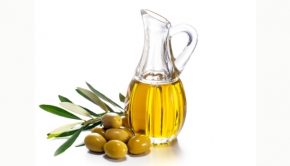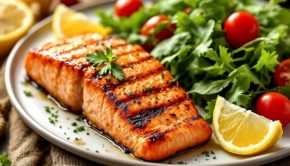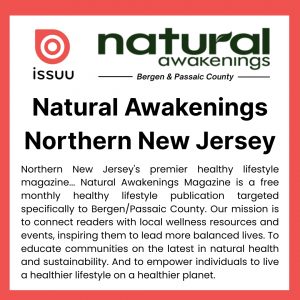Culinary Mushroom Magic, Delicate Powerhouses of Nutrition and Medicine
Mushrooms have played a remarkable role in human history. Egyptian hieroglyphics dating back 4,500 years linked mushrooms to immortality. The famous 5,300-year-old “iceman” found frozen in 1991 in the Tyrolean Alps carried a sachet containing the mushroom species Piptoporus betulinus—the birch polypore. Greek writings of Hippocrates, Pliny, Dioscorides, Galen and others regarded the mushroom Fomitopsis officinalis (agarikon) as a panacea.
While enthusiasm later waned in Europe, with John Farley characterizing mushrooms in his 1784 book, The London Art of Cookery, as “treacherous gratifications,” Native American Indians used varieties such as puffballs (Calvatia and Lycoperdon species) for rheumatism, congested organs and other diseased conditions. Yet, modern-day culinary connoisseurs owe the recent surge in interest in fungal delicacies more to Japanese and Chinese traditions, which have consistently advanced mushrooms’ nutritional and medicinal uses. Ancient Chinese medical texts, including the Hanshu (82 CE) even refer to the famed reishi mushroom (Ganoderma lucidum) as the “mushroom of immortality”.
Today, fungi cuisine in the West is typically limited to Agaracus bisporus—the relatively mild button mushroom, which matures into the acclaimed portobello. But digging deeper into available options reveals chanterelle (Cantharellus sp.), oyster (Pleurotus ostreatus), morel (Morchella sp.) and shiitake (Lentinula edodes) species. These culinary mushrooms provide a virtuosity of delicate flavors harboring nutritional and medicinal benefits, according to those that study them.
University of California-Berkeley research scientist and Mycologist Christopher Hobbs, Ph.D., explains that shiitake and oyster mushrooms follow the button as the most widely cultivated around the world. “They come in many colors, varieties and species and are typically the most easily digested and utilized of all mushrooms,” he notes.
“Mushrooms are an amazing health food,” says Hobbs. “Most edible fungi are high in fiber, good-quality protein, key vitamins, micronutrients, phosphorous and potassium, and low in fat and calories. It’s one of nature’s perfect diet foods.”
As protein powerhouses, portobello and other button mushrooms, shiitake and oyster varieties all deliver between 30 and 35 percent protein by weight.
The fiber content can range from 20 grams per 100 grams (about 3.5 ounces) in the case of portobello to a lofty 48 grams per 100 grams in the Phoenix oyster mushroom.
Mushrooms also supply potent B vitamins. One hundred grams (about 3.5 ounces) of portobello contains more than four milligrams (mg) of riboflavin (B2), 69 mg niacin (B3) and 12 mg pantothenic acid (B5). Shiitake’s comparable numbers are three, 106 and 17 while pink oyster delivers 2.45, 66 and 33 mg of the three nutrients. Thus, they deliver significantly more than recommended daily allowances (RDA)—for example, niacin’s adult RDA ranges from 14 to 16 mg and riboflavin’s is just 1.1 to 1.3 mg.
Mushrooms also present one of the few food sources of vitamin D—primarily D2—but some also contain small amounts of vitamin D3, according to U.S. Department of Agriculture research. Also, their D2 levels spike dramatically when sun-dried spore-side-up, confirmed in research by internationally recognized Mycologist Paul Stamets.
Mushrooms contain important minerals, too. Portobello contains 4,500 mg, oyster 4,500 mg and shiitake 2,700 mg of potassium per 100 grams, all with low sodium levels. Plus, they deliver usable amounts of copper, zinc and selenium.
Beyond the nutrient numbers lies mushrooms’ bonus round: They contain special complex polysaccharides—long-chain molecules within cell walls—that have been the subject of intense research at leading institutions around the world, including Harvard, Yale and the University of California. Mushrooms’ (1-3)-beta-glucan complexes have been shown to inhibit many cancers and suggest potential solutions for diabetes, heart disease and immune-related conditions.
Stamets explains that mushrooms also contain sterols, shown to benefit cardiovascular health. “Shiitake and other mushrooms like reishi have cholesterol-normalizing effects,”
adds Hobbs.
Can we take these benefits back to the kitchen? “Most mushrooms have to be cooked to release their health-giving benefits,” explains Hobbs.
Stamets concurs: “Cooking liberates mushroom nutrients from their matrix of cells. They are tenderized upon heating, making their nutrients bioavailable for digestion.”
Thankfully, finding these tasty superfood delicacies has become easier as entrepreneurial fresh-mushroom growers have emerged throughout the United States in recent years.
Case Adams is a California naturopath and author of 25 books on natural healing. Learn more at CaseAdams.com.





























